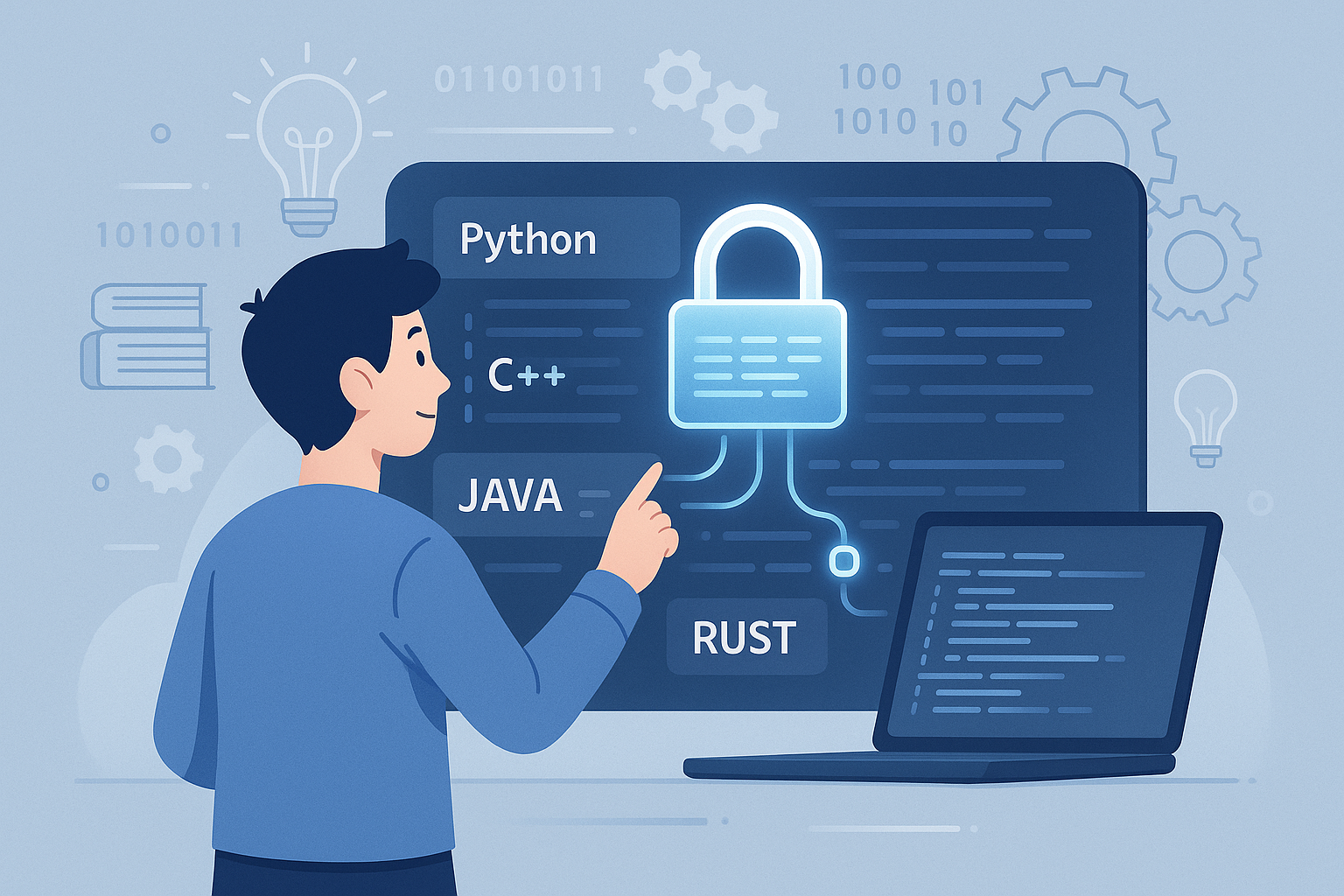Robots are changing our lives and work—from smart assistants and self-driving cars to industrial arms in factories. But every robot needs a brain built with code. If you’re thinking to get into robotics, one of the most crucial choices is picking the right programming language.
Let’s examine the top programming languages used in robotics and figure out which one might suit your journey best.
🧠 Why Is the Programming Language Important?
In robotics, your language choice decides how well your robot can move, think, and interact with its surroundings. Some languages help to control hardware , while others excel at AI, data processing, or building apps to manage robots from afar.
A wise pick will cut down your time and ensure your robot runs —but the wrong one might create needless obstacles.
🛠️ C++: Quick Strong, and Made for Robots
C++ has existed for decades, and robot builders still love it. Why? It’s super fast and gives you control over hardware down to the smallest details.
When to Use C++:
- You’re creating robots that need instant responses
- You want full control of motors, sensors, and hardware
- You’re using Robot Operating System (ROS)
It’s tougher to grasp than some newer languages, but if you’re committed to robotics, it’s worth learning.
🐍 Python: Easy to Learn, Great for AI
Python often serves as the starting point for new programmers—and it also has a big impact on robotics. You can write and read it , and it proves effective for tasks like computer vision, AI, and data analysis.
When to Use Python:
- You aim to create smart robots that rely on AI or machine learning
- You focus on prototypes or research
- You work with tools like OpenCV, TensorFlow, or ROS that support Python
Python doesn’t excel at direct hardware control, but it works well with C++ in many robotics projects.
☕ Java: Reliable and Cross-Platform
Java isn’t the first language you think of for robotics, but it has a role in certain areas—where apps and portability matter.
When to Use Java:
- You’re creating Android-based robots
- You want your code to work on different devices without hassle
- You’re working with robotics kits like Lego Mindstorms
Java offers excellent tools to build logic and user interfaces in educational and mobile settings.
📊 MATLAB: Ideal for Simulations and Math
MATLAB focuses less on real-world robot control and more on the math behind it. Researchers and academics love it.
When to Use MATLAB:
- You want to test how your robot acts before you build it
- You’re zeroing in on planning routes studying movement, or managing control systems
- You’re knee-deep in robotics studies or school projects
It’s not the best choice for running code on actual robots, but it helps check and tweak ideas before going live.
🧠 Lisp: Old School but Still Sharp for AI
Lisp ranks among the oldest coding languages, yet it still commands respect for its role in AI in academic studies.
When Lisp Shines:
- You work on cognitive robotics or symbolic AI
- You need a language that supports complex reasoning with flexibility
- You explore experimental or research-heavy projects
Lisp still has a small but dedicated following in AI circles even though it’s not common in commercial robotics today.
🦀 Rust: The Up-to-Date C++ Alternative
Rust is a newer language that combines C++’s speed with built-in safety features. It’s getting attention because it’s reliable secure, and excellent for embedded systems.
When to Use Rust:
- You want quick code without memory errors
- You’re creating secure, crash-resistant robotic systems
- You’re searching for a modern, user-friendly alternative to C++
Rust continues to gain ground in robotics, and it’s a good choice for future projects.
🌐 JavaScript: Making Robots Work with Websites
JavaScript is known for building websites, but people also use it for home robotics projects and controlling robots through web browsers.
When JavaScript Makes Sense:
- You want to run robots from a website
- You’re using tools like Johnny-Five with Arduino
- You’re creating live dashboards for robots
JavaScript works well for linking your robot to the internet or building basic control screens.
💡 Picking the Best Language
Not sure which language to choose? Here’s a simple guide:
| Goal | Best Language |
|---|
| Hardware control | C++ |
| AI & Machine Learning | Python |
| Simulation & Math | MATLAB |
| Web-based robots | JavaScript |
| Mobile robots | Java |
| Secure embedded systems | Rust |
| Experimental AI | Lisp |
Remember, you don’t need to use just one language. Many robotics projects combine Python + C++. Python handles the logic and data, while C++ takes care of hardware control.
